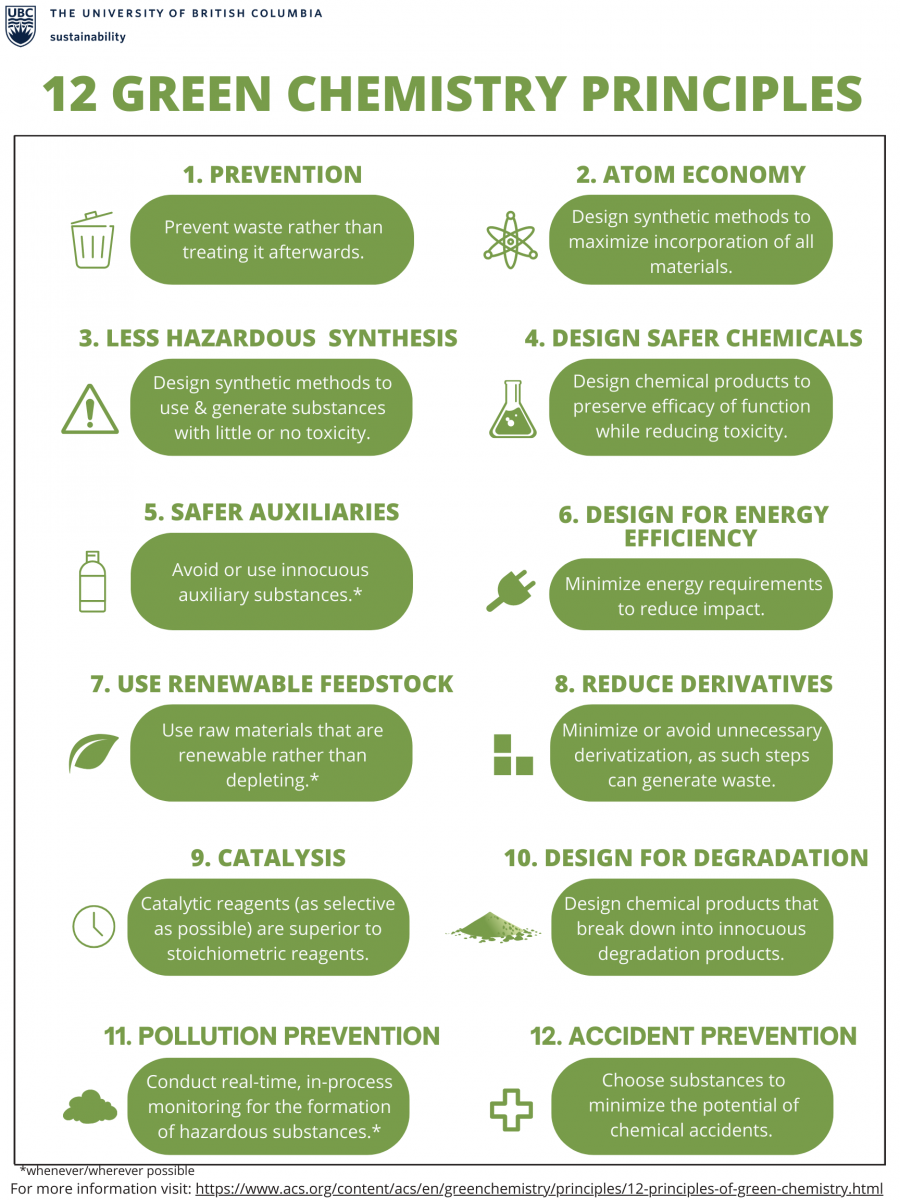Green Chemistry is the design of chemical products and processes that reduce and/or eliminate the use or generation of hazardous substances.1
In 1998, Dr. Paul Anastas and Dr. John Warner developed the 12 Green Chemistry Principles as an upstream solution to pollution prevention when synthesizing new chemicals.
Here are some useful tools to learn about your chemistry's impact and how you can reduce it through rethinking the process.
12 Green Chemistry Principles

Green Purchasing
Our purchases can be greener by selecting more sustainable and environmentally conscious alternatives.
To find out more on Green Purchasing visit our guide.
Designing Chemistry
When designing an experiment there are several tools available to help assess risk and alternative safer chemicals/auxiliaries.
One resource is the MilliporeSigma DOZNTM 2.0 which calculates scores for chemicals or processes. The closer the score is to 0 (from a scale ranging 0-100) it corresponds to a greener aspect.
Other useful resources include solvent replacement guides for safer solvent selection.
1. Pfizer solvent guide
2. GlaxoSmithKline solvent guide
3. ACS solvent guide
Lastly a resource by the ACS Green Chemistry Institute presents greener reagents for common chemical transformations (e.g. Fluorination, Suzuki-Miyaura).
Fun ways to learn Green Chemistry
There are several fun ways to learn more about Green Chemistry through social media or games. Here are a few examples:
1. Watch ChemCollective on TikTok for fun videos on chemistry!
2. Play a phone game developed by ACS called Green Tycoon
3. Play Elemental escapades from EuChemS
